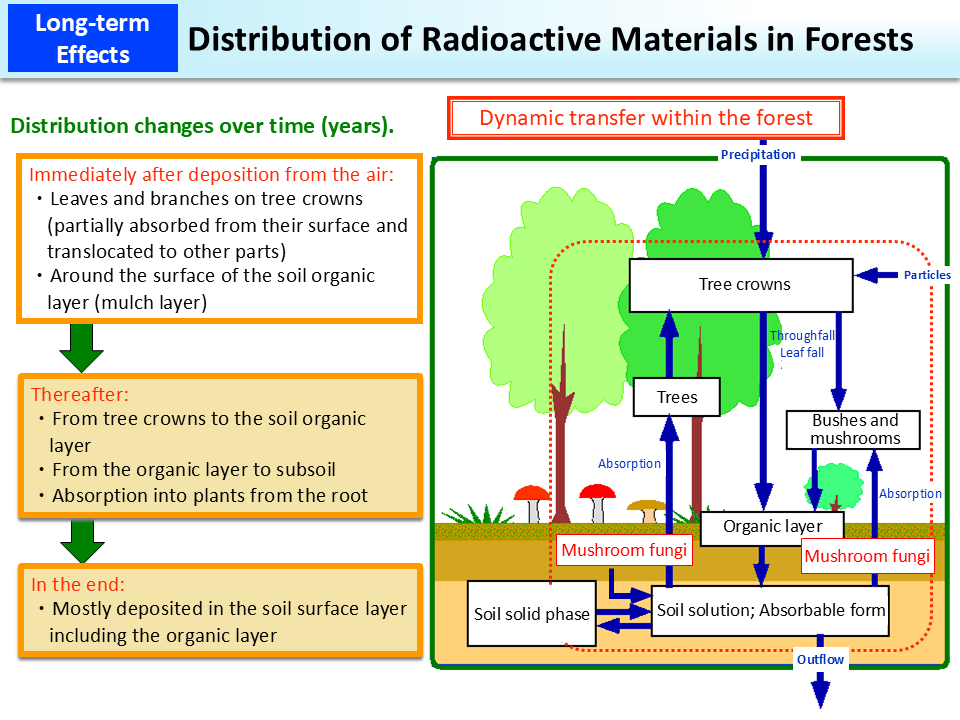Distribution of Radioactive Materials in Forests
Distribution of radioactive materials in forests is considered to change significantly over years.
Radioactive cesium in the air adheres to leaves and branches, which eventually wither and turn into soil containing organic matter like muck soil. Some radioactive materials are absorbed from leaves or bark and transfer to new leaves or fruits within the plant, but they also turn into soil in the end.
Organic-rich soil lacks clay minerals that adsorb cesium and cesium tends to be absorbed into plants in such soil.
Radioactive cesium in the organic layer gradually transfers into subsoil, and plants that take root deeper than the surface layer will come to absorb such cesium.
In this manner, radioactive cesium is fixed in the clayey soil in the process of circulating between plants and soil and is finally deposited in the surface layer of soil, as in the case of stable cesium.
As a result of the measurement of cesium in river water conducted by the Forestry and Forest Products Research Institute, cesium was not detected in most of the river water samples. Cesium was detected only in samples of turbid water collected on days with precipitation but the detected values were very small (p.34 of Vol. 2, “Readings of the Monitoring of Radioactive Cesium in Mountain Streams (2012)”).
(Related to p.32 of Vol. 2, “Changes in Ambient Dose Rates in Forests,” and p.33 of Vol. 2, “Changes in Radioactive Cesium Distribution in Forests”)
- Included in this reference material on March 31, 2013
- Updated on March 31, 2019

